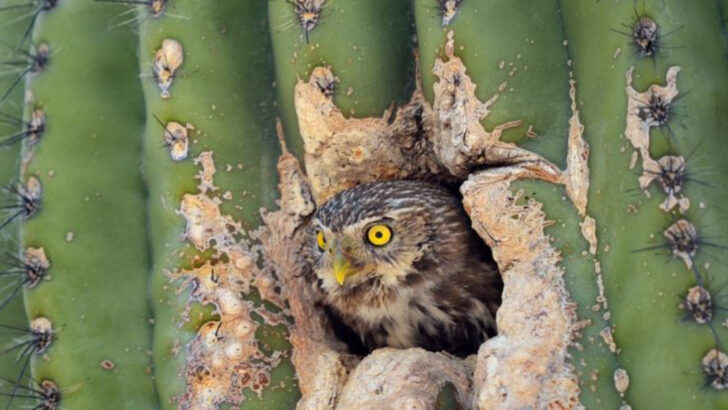The desert isn’t dead—it’s alive, fierce, and crawling with life. While most people picture endless sand and scorching heat, the deserts of Nevada, Arizona, and Utah are buzzing, slithering, sprinting, and soaring with creatures built for survival. These animals don’t just live here—they thrive in it. We’re talking about lizards that run on two legs. Rodents that never drink water. Venomous reptiles, owl-sized owls, and spiders the size of your hand. These deserts are no barren wastelands. They’re wild arenas, where evolution has crafted some of nature’s strangest and toughest survivors. Here are 13 desert creatures that call the American Southwest home—and totally own it.
Desert Tortoise
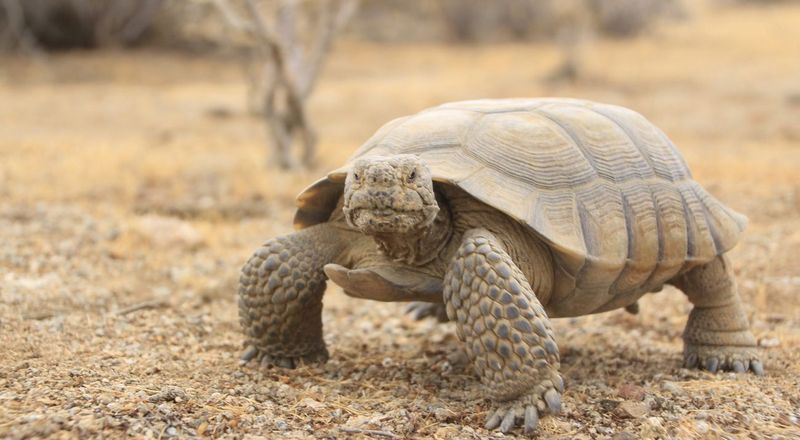
With an air of timeless wisdom, the Desert Tortoise spends most of its days hidden away in the cool sanctuary of underground burrows. These gentle reptiles are masters of conservation, absorbing water from the plants they eat. Emerging only during cooler parts of the day, they display remarkable patience and adaptability. Their shells, a mosaic of tan and brown, blend seamlessly with the desert landscape, providing camouflage from predators. In the Mojave Desert, their quiet perseverance is a testament to the resilience required to thrive in such an arid environment.
Gila Monster
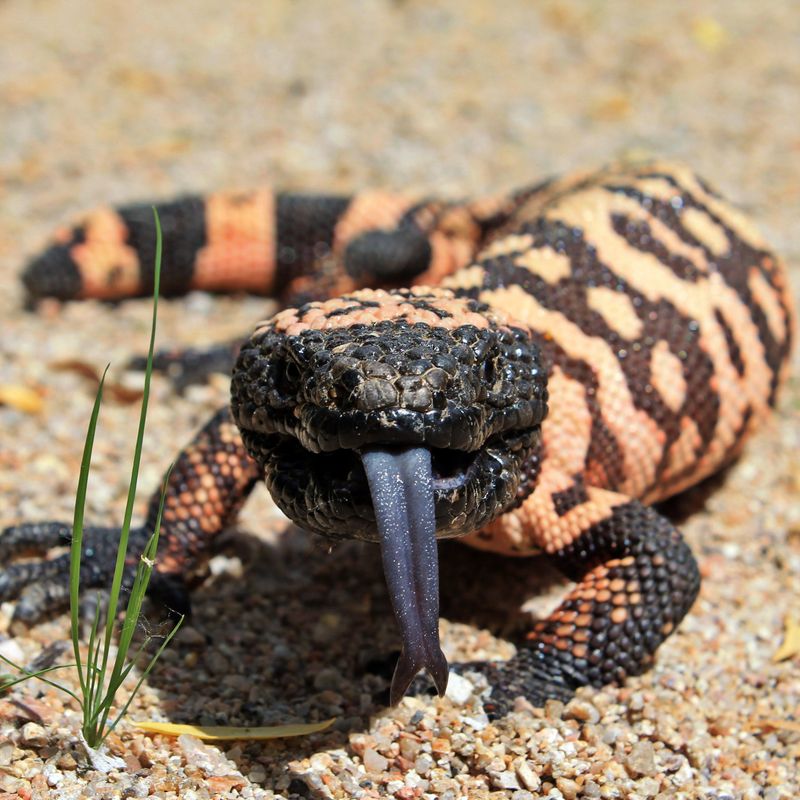
Slow-moving yet strikingly beautiful, the Gila Monster roams the arid landscapes of Arizona and southern Nevada. It’s one of the few venomous lizards in the world, but its venom is used more for defense than for hunting. Their vibrant skin, a patchwork of orange and black, serves as a warning to potential threats. During cool mornings, they may be spotted basking on rocky outcrops, absorbing the sun’s warmth. These fascinating creatures embody the mystique of the desert southwest, blending danger with stunning beauty.
Roadrunner
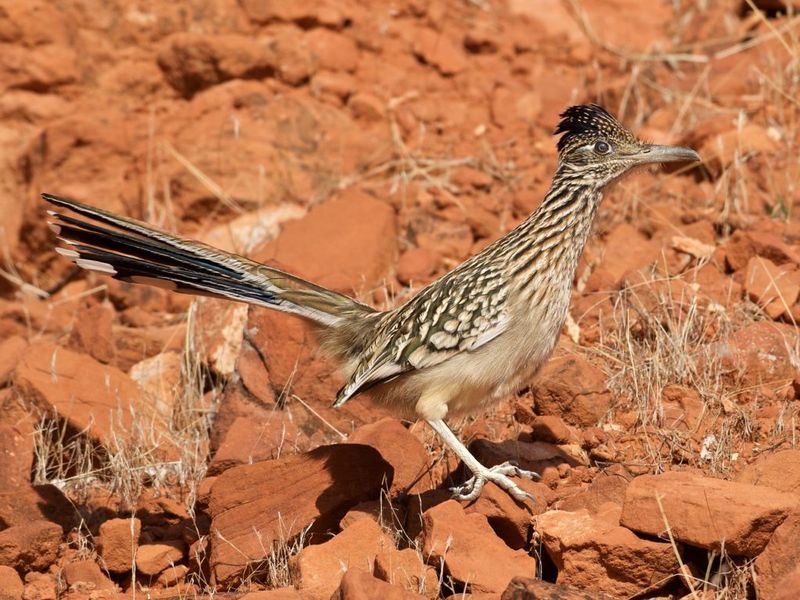
Speed and agility define the Roadrunner, a bird that seems more like a desert sprinter than a flier. With its long legs and streamlined body, it dashes across the sandy terrain, often in pursuit of lizards and snakes. Despite their comical appearance, these birds are fearless hunters. They thrive in the open desert, where they can utilize their remarkable speed to outmaneuver both prey and predators. Often seen darting across roads, the Roadrunner is a symbol of survival and wit in the harsh desert landscape.
Kangaroo Rat
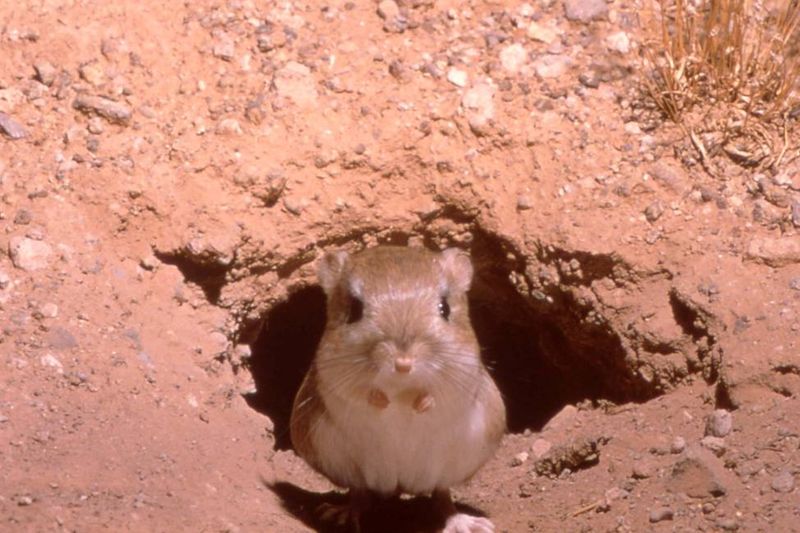
The Kangaroo Rat is a marvel of desert adaptation, known for its ability to live without ever drinking water. It hops through the desert on its powerful hind legs, foraging for seeds that provide all the moisture it needs. Active mostly at night, it avoids the blistering heat of the day. Its large eyes and ears help detect predators in the moonlit desert. This tiny rodent, with a fur coat of sandy hues, is a testament to nature’s ingenuity, thriving in one of the most unforgiving environments on Earth.
Collared Lizard
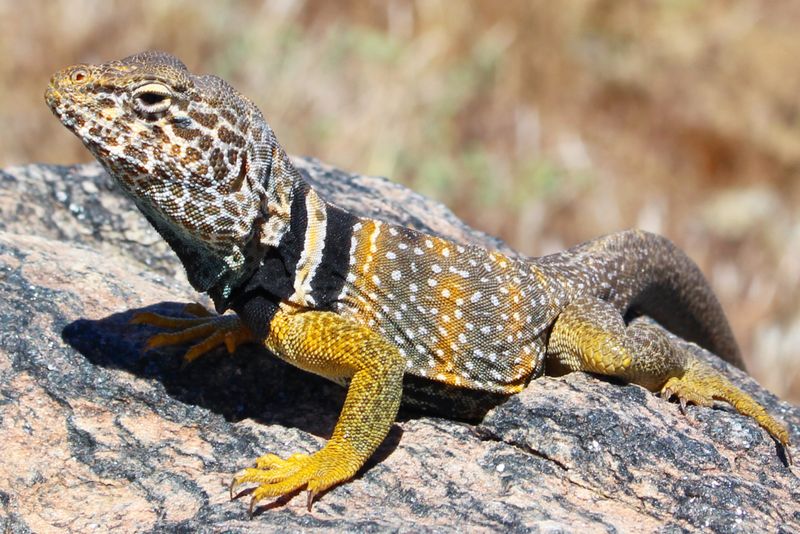
Vibrant and vivacious, the Collared Lizard is a desert dweller known for its vivid colors and athletic prowess. With a body adorned in bright blues and greens, it can often be seen basking on sunlit rocks. In an impressive display of agility, these lizards can run on their hind legs, reaching speeds up to 16 mph. Their striking appearance and dynamic movements make them a captivating sight. In the vast desert landscapes of Utah, the Collared Lizard adds a splash of color to the rugged terrain.
Coyotes
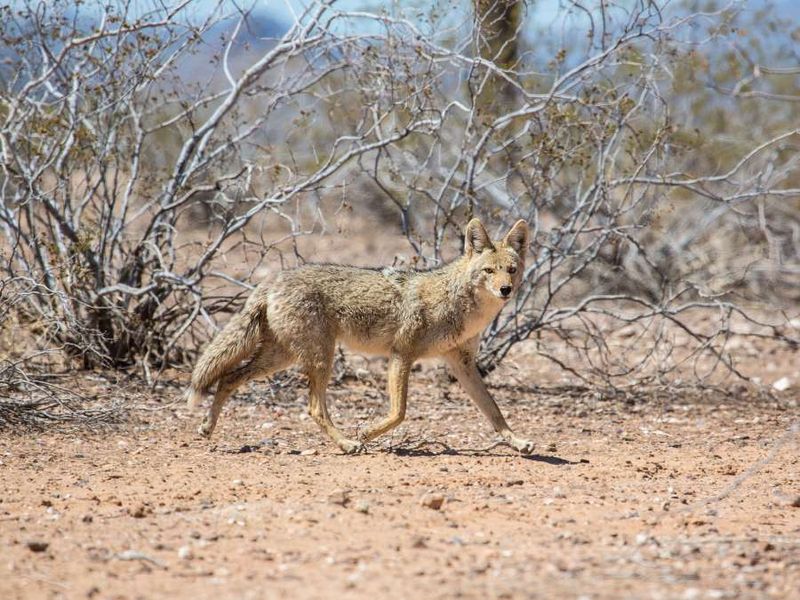
Cunning and adaptable, Coyotes are one of the most versatile inhabitants of the desert. They traverse the varied landscapes of the Southwest, from rocky hills to flat plains, with ease. Often seen at dawn and dusk, they are skilled hunters, preying on small mammals and birds. Their eerie howls echo across the desert night, a haunting yet beautiful reminder of their presence. In the deserts of Nevada, Arizona, and Utah, Coyotes exemplify the resourcefulness needed to thrive in such challenging environments.
Jackrabbit
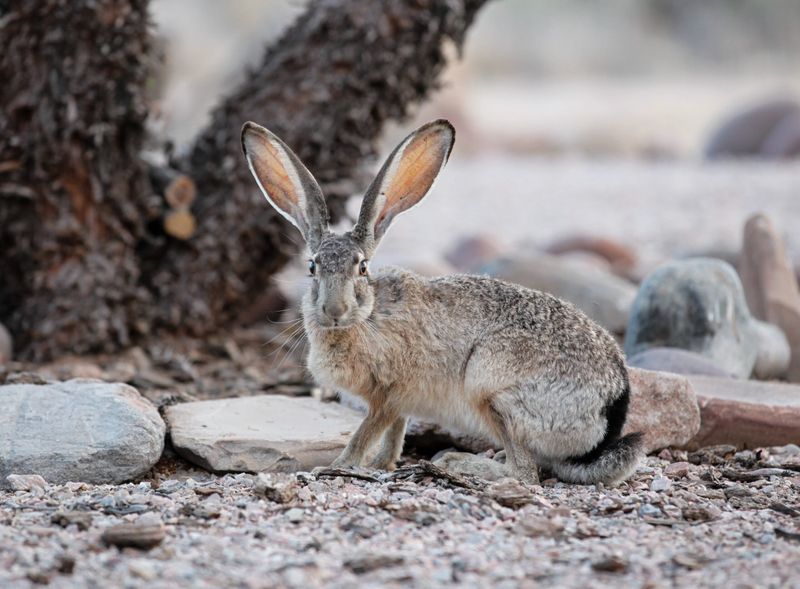
With legs built for speed and ears designed to dissipate heat, the Jackrabbit is a true desert runner. Capable of reaching speeds up to 40 mph, it relies on its agility to escape predators. Its long ears not only enhance hearing but also help regulate body temperature in the scorching desert heat. Often sighted in the open scrublands, these hares blend into their surroundings with ease, their mottled fur mirroring the landscape. In the deserts of the Southwest, the Jackrabbit is a testament to evolutionary excellence.
Western Diamondback Rattlesnake
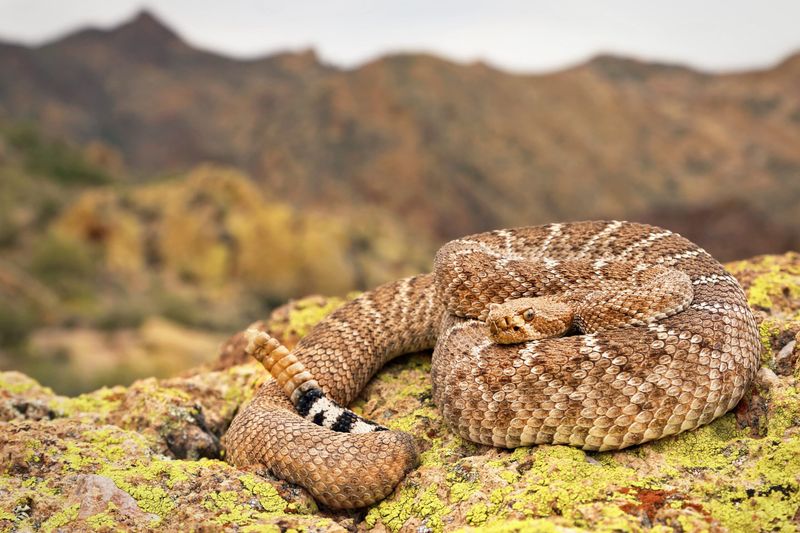
The Western Diamondback Rattlesnake is an emblem of desert danger, with its distinctive rattle and striking diamond pattern. Known for its defensive hiss and intimidating rattle, it commands respect from those who encounter it. This venomous snake avoids confrontation when possible, preferring to warn rather than strike. It thrives in the arid climates of the desert, where it hunts small rodents and birds. In the deserts of Arizona and Nevada, the Western Diamondback is a reminder of the delicate balance between predator and prey.
Chuckwalla
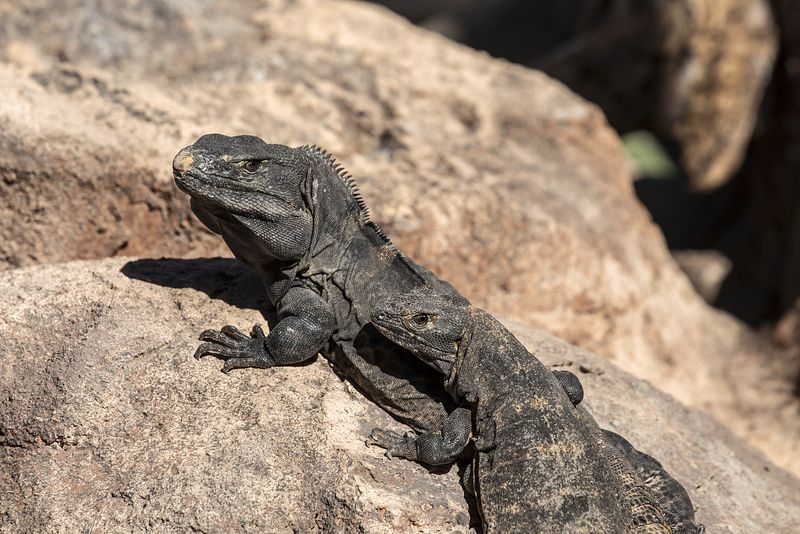
The Chuckwalla, with its robust body and gentle nature, is a peaceful inhabitant of the desert rocks. Known for inflating itself to wedge tightly into crevices, it avoids predators with this unique defense mechanism. Its diet consists mainly of desert plants, making it a herbivore at heart. The Chuckwalla’s skin, a blend of grey and orange, provides camouflage among the rocky outcrops it calls home. Found throughout the Mojave Desert, this lizard is an expert at utilizing its environment to ensure survival.
Tarantula
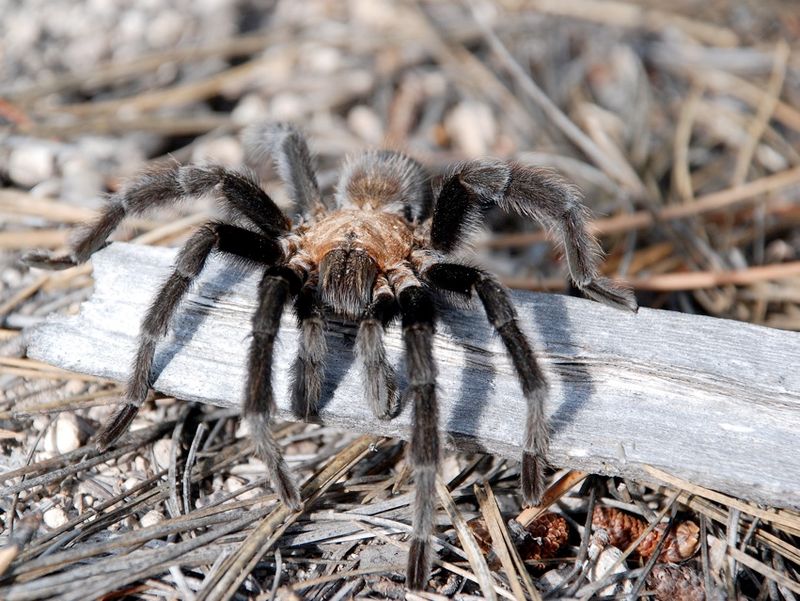
Emerging with the approach of monsoon season, the Tarantula is a nocturnal wanderer of the desert floor. These large, hairy spiders may appear menacing, but they are surprisingly gentle. Their burrows provide refuge from the extreme temperatures, and they venture out under the cover of night to hunt. With a slow, deliberate movement, they capture insects and small animals. In the deserts of the Southwest, the Tarantula is an integral part of the ecosystem, balancing predator and prey dynamics.
Elf Owl
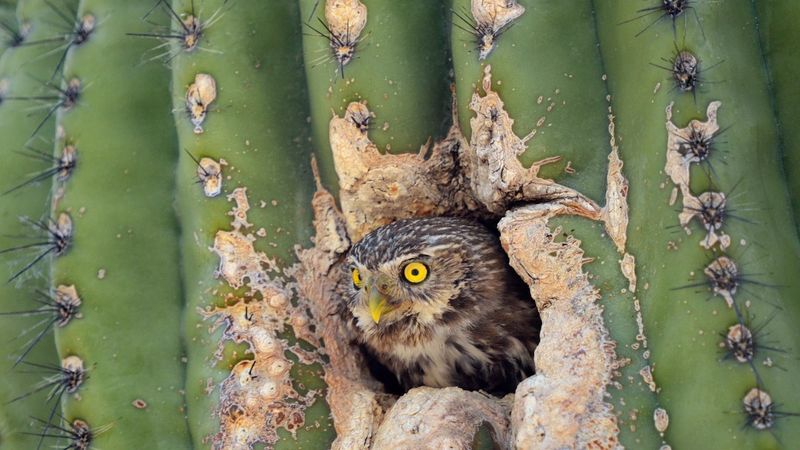
Tiny yet formidable, the Elf Owl is the smallest owl in the world, residing in the saguaro cacti of the desert. With wide eyes and a curious demeanor, it navigates the night in search of insects and small prey. These owls make their homes in abandoned woodpecker holes, offering safety and shelter. Their soft, haunting calls echo through the desert night, a reminder of their elusive presence. In Arizona’s deserts, the Elf Owl adds a touch of mystery to the moonlit skies.
Desert Bighorn Sheep
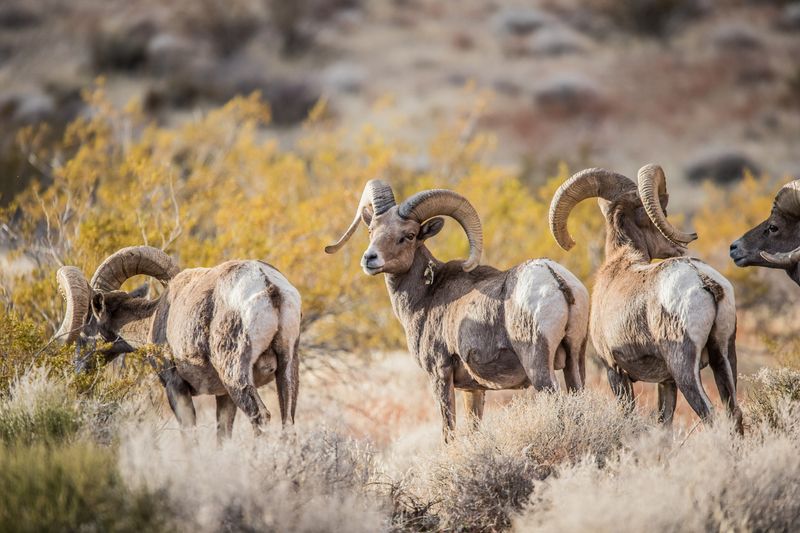
Majestic and sure-footed, the Desert Bighorn Sheep is a symbol of the rugged beauty of the desert. With powerful legs and large, curved horns, they traverse the steep, rocky cliffs with unparalleled grace. These sheep are social animals, often seen in small herds, grazing on the sparse vegetation. Their keen eyesight and agility help them evade predators in this harsh environment. In the canyons of Utah and Nevada, the Desert Bighorn Sheep embodies the strength and resilience of desert wildlife.
Arizona Bark Scorpion
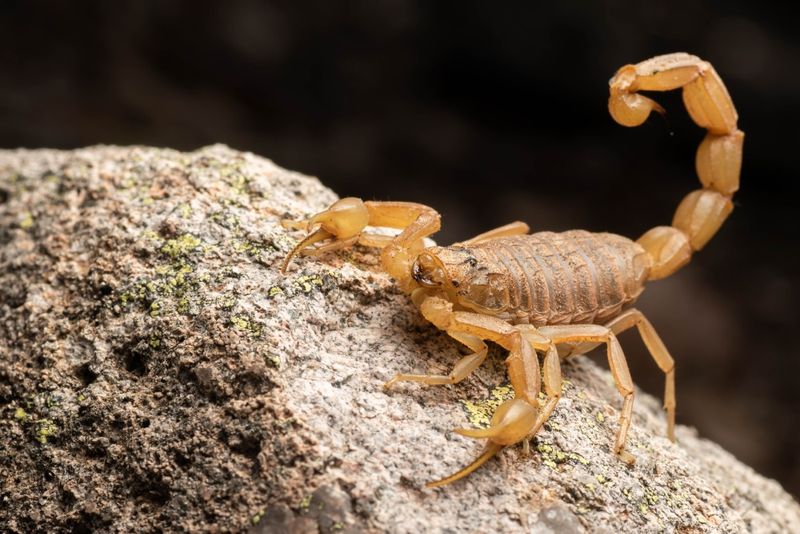
Lurking in the shadows of the desert, the Arizona Bark Scorpion is a nocturnal predator with a potent sting. Despite its small size, it is highly adaptable, often found hiding under rocks and bark during the day. At night, it emerges to hunt, using its pincers and venomous tail to capture prey. This scorpion’s pale yellow color allows it to blend seamlessly with the desert sand. In the deserts of Arizona, the Bark Scorpion is a reminder of the unseen wonders and hidden dangers of the desert night.

